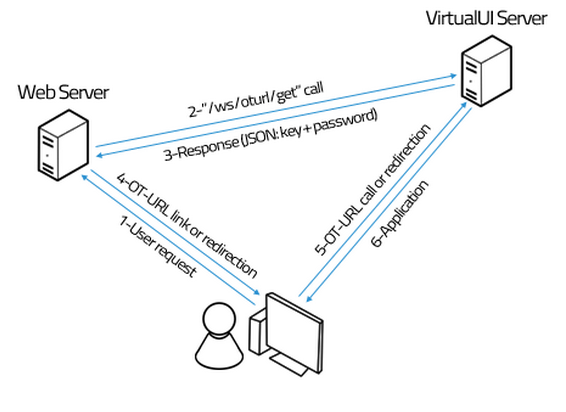The One-Time URL is an unique, disposable URL leading to a specific VirtualUI application. What makes it useful is that it allows for passing credentials and/or custom data to the application through an independent secure channel, hidden to the end user.

A usual scenario involves a backend service (ie. a web server), where the user’s credentials are validated. This backend service communicates with a VirtualUI Server to request the creation of a One-Time URL, passing information about the application to run, credentials and custom data. This information is stored temporarily and indexed by a unique access key. Also a random passcode is created and used to encrypt the stored information. This access key and passcode are returned to the backend service to build the final One-Time URL.
Once the user is directed to the provided URL (automatically or by clicking on a link), VirtualUI validates the access key and passcode and starts the application passing the associated data. Finally, this key and associated data are removed from memory and therefore the URL becomes invalid. The same happens if the URL was not used for the amount of time specified in the creation request.
Read more: